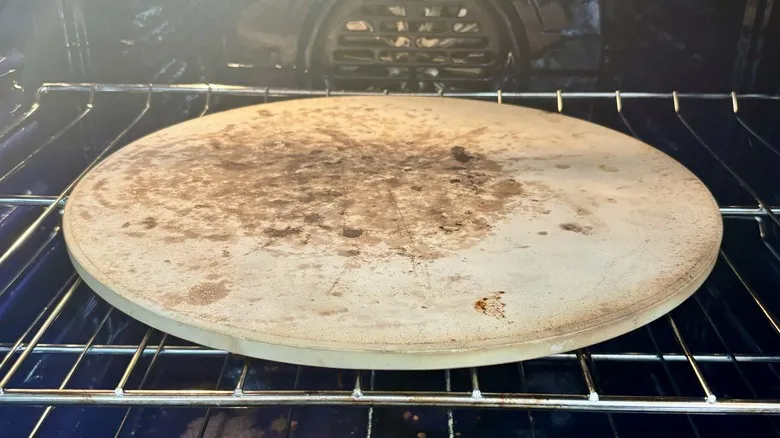What is a pizza stone?

There are various pizza cooking tools available that may sound alike but are actually quite distinct. A pizza stone, as the name suggests, is a large, flat stone specifically designed for baking pizza. While pizza stones take some time to heat up, they retain heat exceptionally well, which aids in cooking the bottom of the pizza more efficiently. Typically made from ceramic or clay, pizza stones are quite heavy. In contrast, a pizza steel, as indicated by its name, is constructed from steel.
Both of these differ from a pizza pan, which is simply a large pan used for baking pizza. Pizza pans do not retain heat as effectively as pizza stones and therefore do not cook in the same manner.
Tools you will need
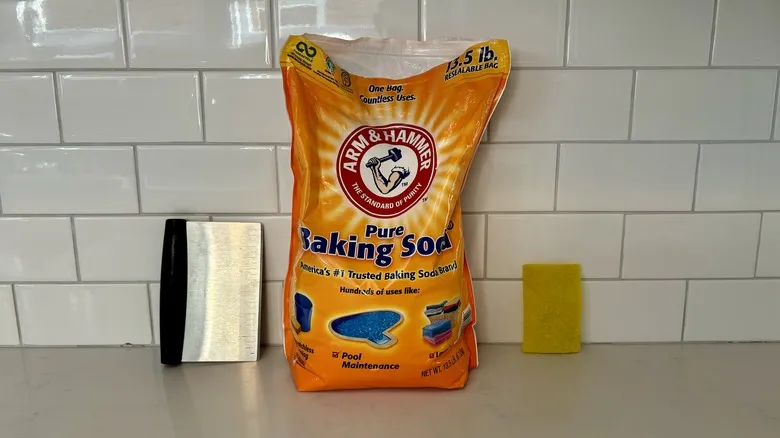
The positive aspect is that pizza stones are typically simple to clean. All you need is water, a stiff brush or sponge, a cloth, and some vinegar or baking soda.
A bench scraper can also be useful, as it effectively removes larger pieces of food that might be adhered to your pizza stone. This cleaning method doesn't necessitate any special tools.
What not to do
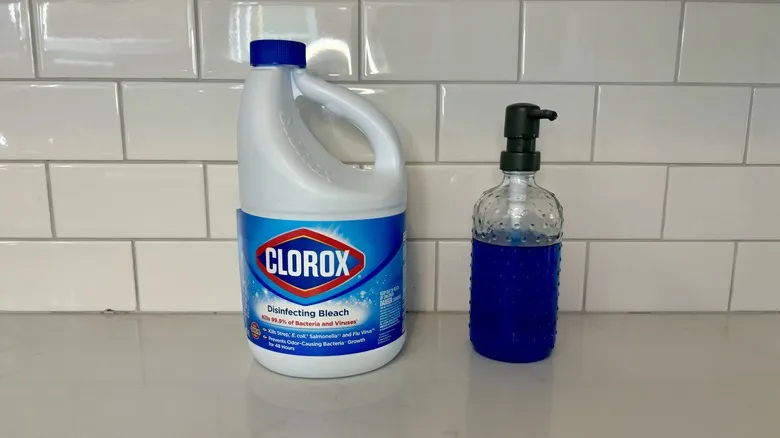
You might have noticed that something you considered essential is absent from the list of tools: soap. While it seems obvious to use soap, many manufacturers actually advise against using dish soap on a pizza stone. Pizza stones are typically porous, which means that using dish soap could leave a residue that might affect the flavor of your future pizzas, resulting in a soapy taste. Not exactly appetizing.
Similarly, avoid using bleach or any harsh chemicals. While food safety is crucial, pizza stones are designed to withstand extremely high temperatures—often exceeding 1000°F. In fact, sterilization begins at 300°F.
How clean is clean
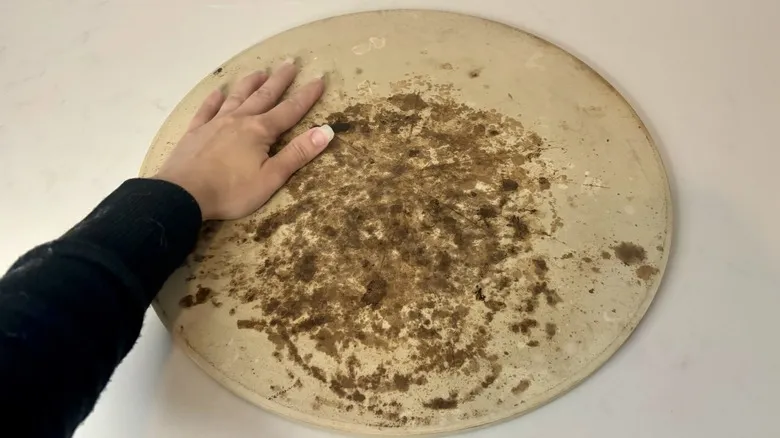
Ultimately, it's essential to grasp what "clean" signifies in relation to a pizza stone. As mentioned, pizza stones are porous, which means they can easily absorb stains. While it might be tempting to try to remove every trace of staining, it's not necessary. Stains won't impact the performance of your pizza.
If the appearance of stains bothers you, we can provide tips to reduce them. However, the primary objective is to maintain a surface that is free from debris and germs, rather than ensuring it looks as if it has never been used for pizza.
Scrape your pizza stone
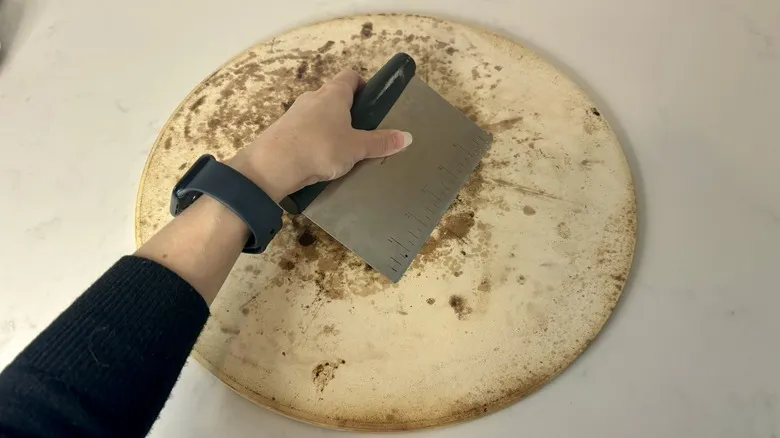
Start by utilizing a plastic or metal bench scraper or a brush to remove all food particles. You should be able to scrape off most of the larger pieces. While there may be some minor residue remaining, that's perfectly fine. We'll address that in the following steps.
Wipe down with a warm washcloth
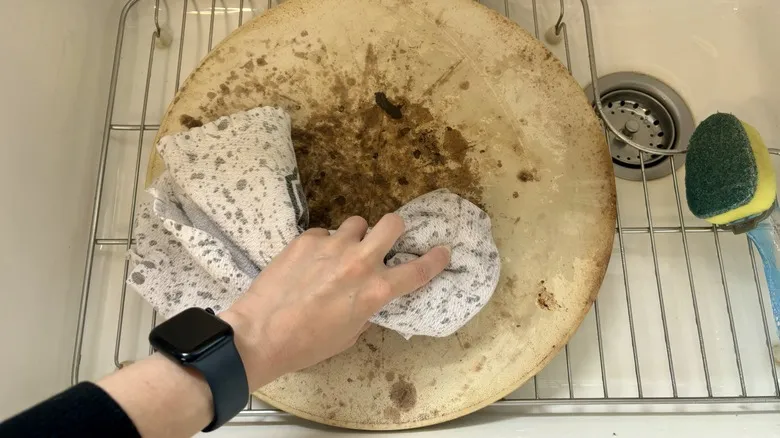
Next, moisten your stone with warm water. Utilize a damp washcloth or a clean sponge to remove any leftover food particles from the stone.
Optional: Make a paste of baking soda and water and scrub stains
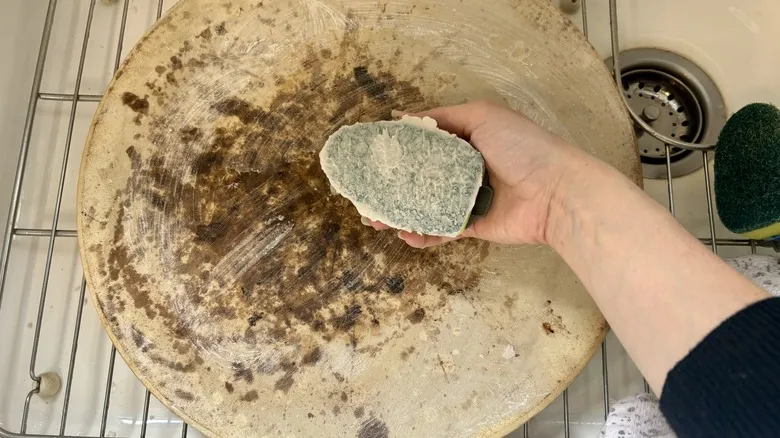
This step is mainly for those who are eager to remove some of the stains. While it's not essential, it can be beneficial. To create a paste, mix water with baking soda in a separate bowl or container until you achieve a paste-like texture.
Next, apply some of the paste to your sponge and use it to scrub the surface of the pizza stone, focusing on any trouble areas. This method can assist with stains and stubborn, baked-on food, although it may not eliminate all discoloration.
Rise your stone
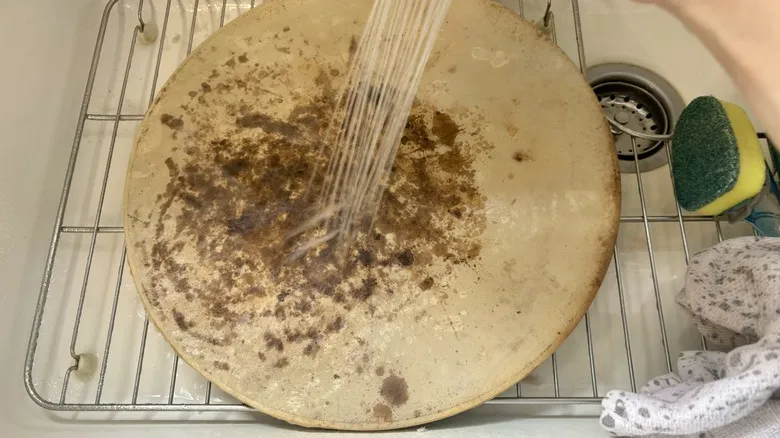
If you applied a baking soda solution, be sure to rinse your stone and wipe it down once more. Ensure that all traces of baking soda are completely removed.
Fully dry your stone
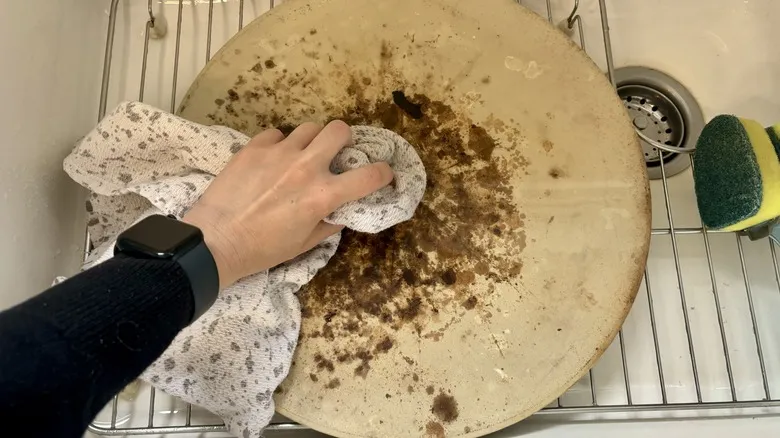
Make sure your pizza stone is completely dry before putting it away. A simple method is to place it in a warm oven to eliminate any remaining moisture. It's important to ensure it's fully dried before storing it in cabinets to prevent moisture buildup and potential issues later on.
Pizza stone maintenance
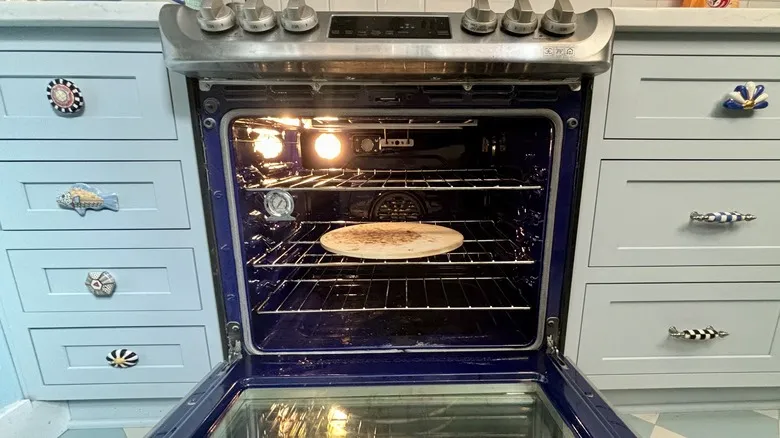
Pizza stones are durable, but they aren't indestructible. Steer clear of placing your pizza stone in a preheated oven. The stone requires time to acclimate to the heat.
Instead, place the stone in the oven and let it preheat alongside the oven. This will help prevent any cracking. To maintain your pizza stone, be sure to clean it after every use.
How to use a pizza stone
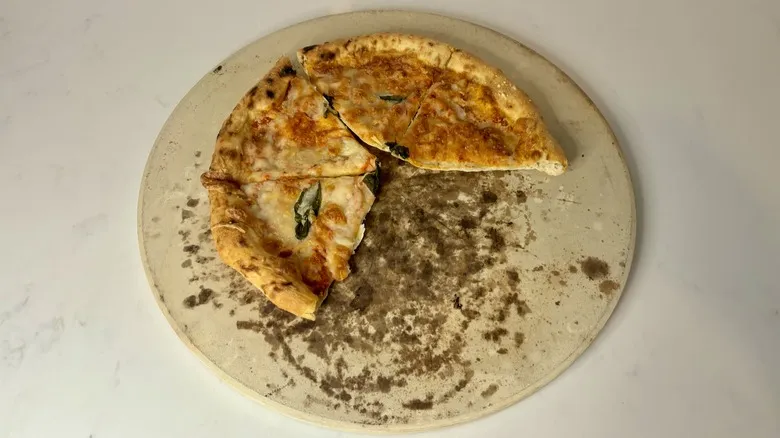
Pizza stones are not only excellent for crafting pizza; they are also invaluable for any baking endeavor that requires a reliable heat source. For instance, when it comes to baking pies, pizza stones can be transformative. As "The Great British Baking Show" has demonstrated, no one enjoys a soggy bottom on their pie. Pizza stones effectively retain heat at the base of the crust, which can be challenging to achieve otherwise. Whether your pie is a sweet treat like apple pie or a savory option like cheesy roasted tomato pie, soggy bottoms stand no chance against the heat-retaining capabilities of a pizza stone.
Additionally, pizza stones are great for baking bread and roasting vegetables. You don’t necessarily need to place the food directly on the stone; using a pan or pie plate on top of the pizza stone will still allow it to conduct heat and ensure your dishes are cooked to perfection.
Recommended
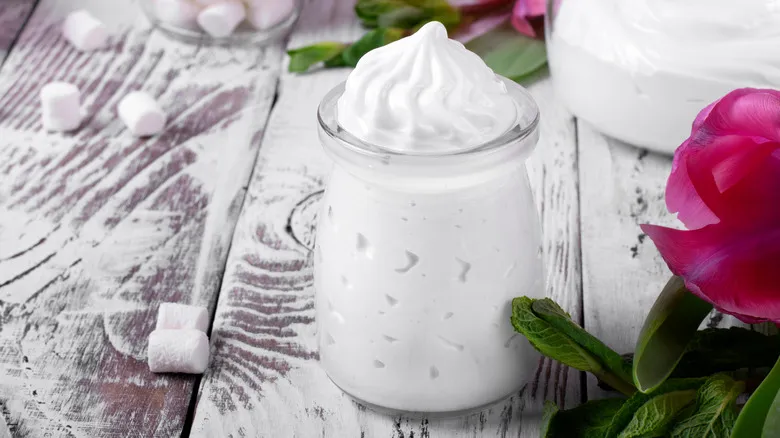
The Only 2 Ingredients You Need For Easy Marshmallow Fluff
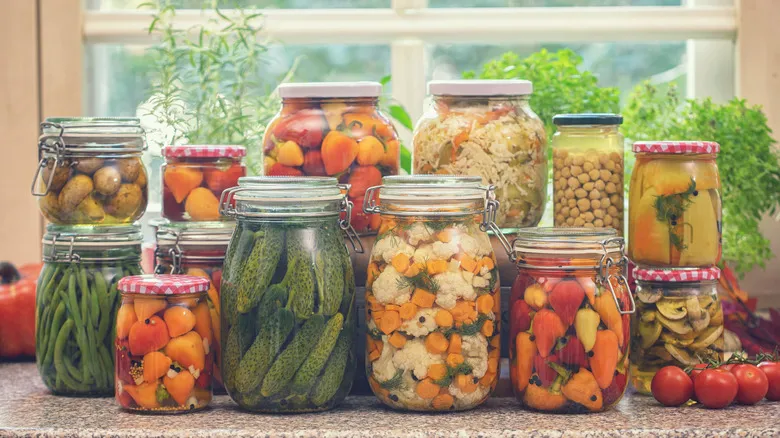
The Tell-Tale Signs Your Home-Canned Goods Have Spoiled
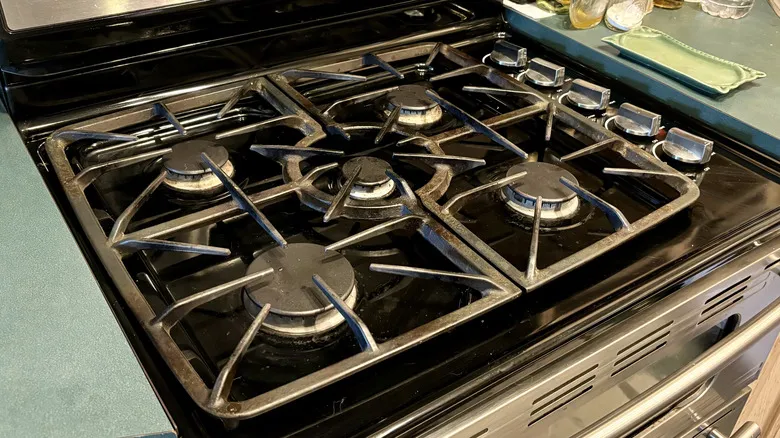
How To Clean And Care For Gas Stove Grates
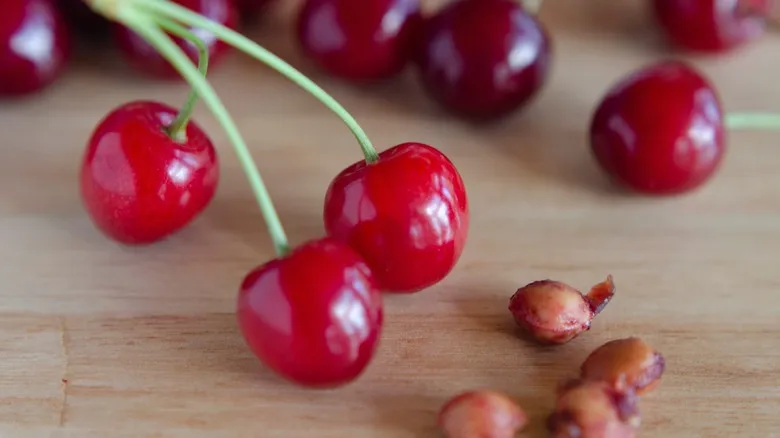
The Tastiest Way To Use Cherry Pits Before You Discard Them
Next up

